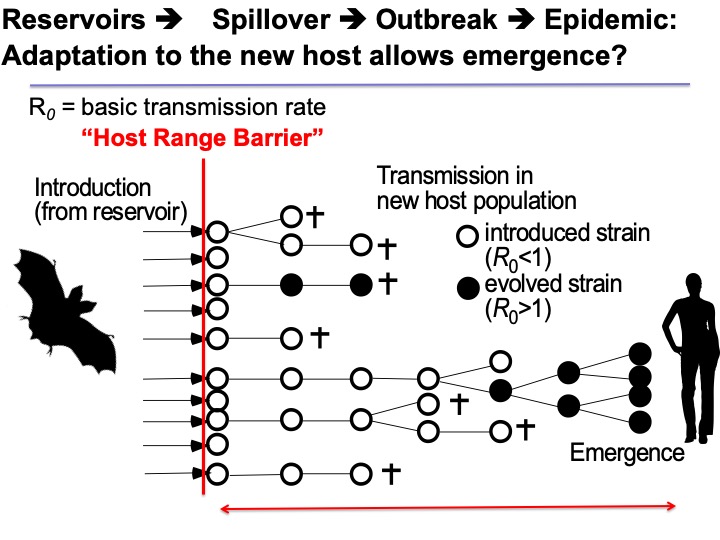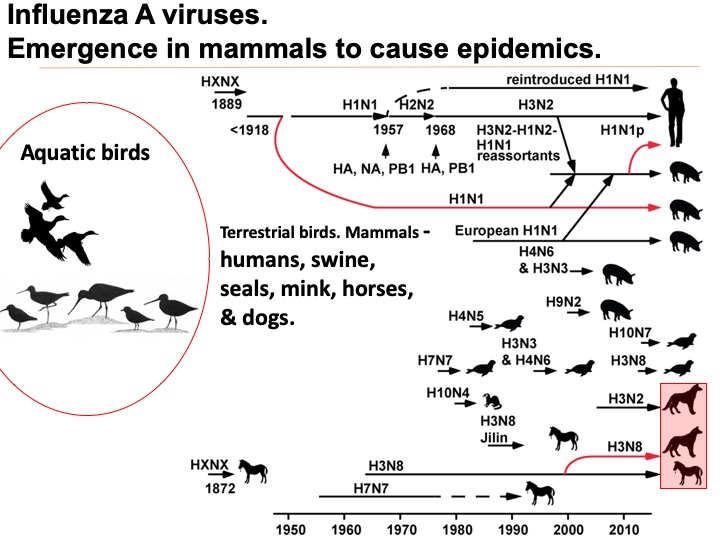OUR RESEARCH
Studies of viral host range control
The overall research of the laboratory is concerned with understanding the factors that control viral host ranges. Many of our studies are focused on the analysis the host ranges of the CPV and the H3N8 and H3N2 canine influenza viruses, but we are also interested in using what we learn and the results from other viral systems to define the general principles that apply to viral emergence in new hosts to cause epidemics or pandemics (ref)(ref).
Modeling and understanding of the transfer of viruses into new hosts is complex, as the processes often involves the ecology of the original and destination hosts so that the new host is exposed – sometimes this involves an intermediate host that has more contact with the new host population. When the new host is infected the virus must be spread into a population where there are enough animals and contact network so that the virus can spread readily. Finally, the virus must overcome barriers in the new host that may block the infection, replication and transmission of the virus. That is a lot easier in dense well connected populations such as humans, compared to small or poorly connected populations where the virus is likely to die out due to stochastic effects.

